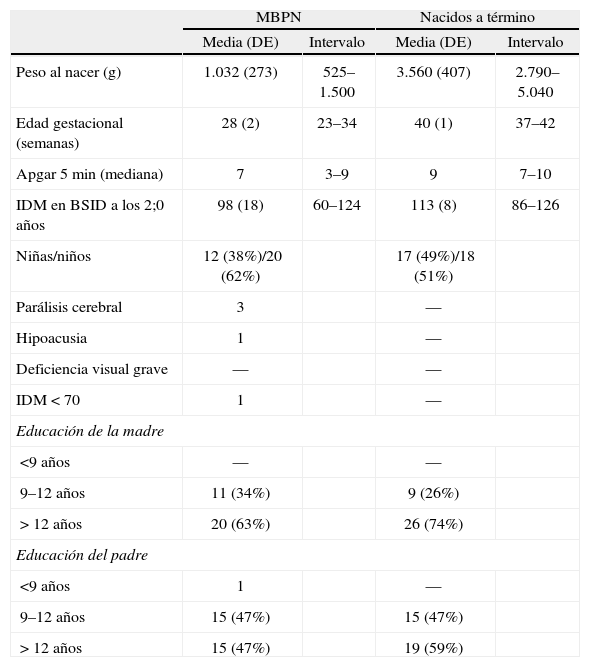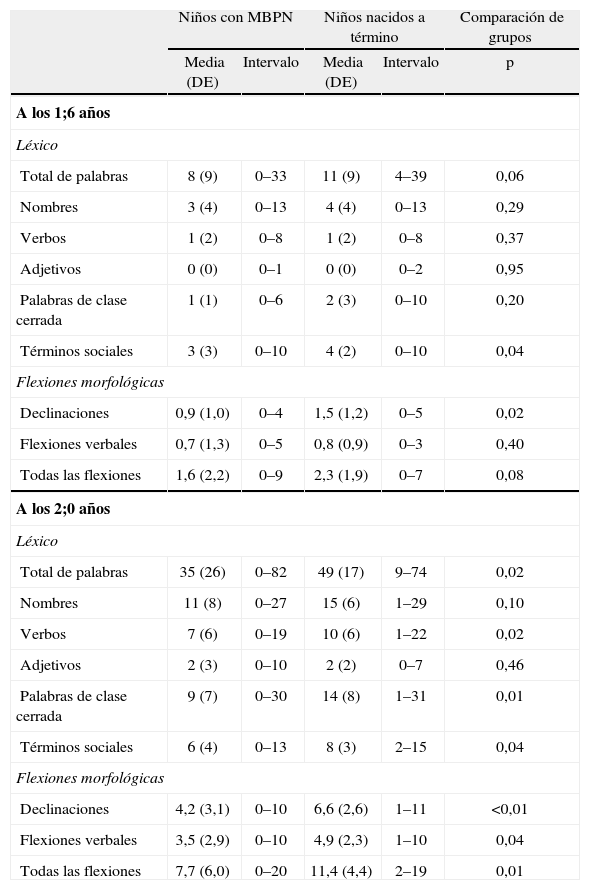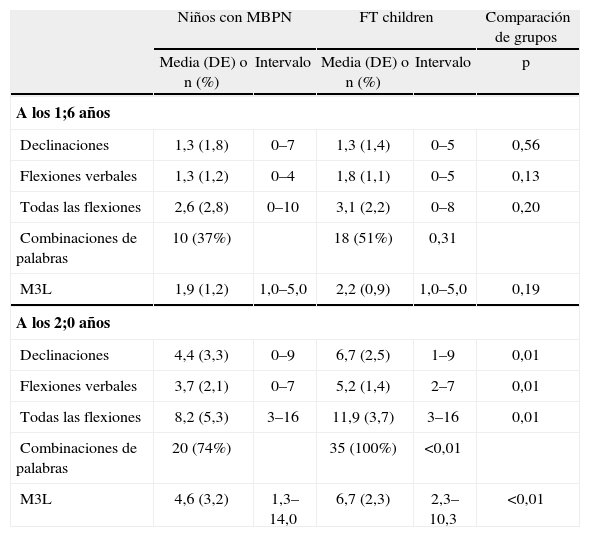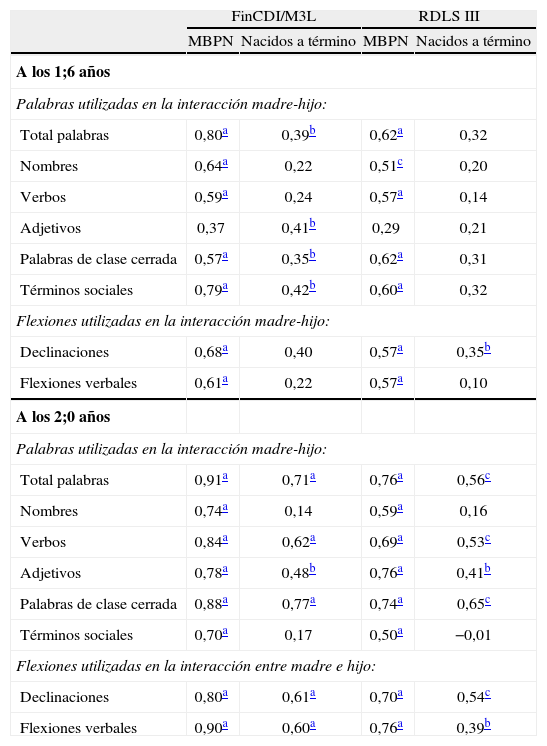El objetivo de este estudio es analizar el lenguaje utilizado en las interacciones tempranas entre madre e hijo en una cohorte seleccionada de niños con muy bajo peso al nacer (MBPN). Se analizaron los tipos de palabras y los tipos flexivos del finlandés utilizados a la edad de 1;6 y 2;0 años en interacciones madre-hijo y se compararon con los de 35 controles nacidos a término. Se recabó también la información referente al desarrollo gramatical temprano utilizando la versión finlandesa del Inventario de Desarrollo Comunicativo en ambas edades. Además, se analizaron las habilidades lingüísticas de los niños a los 2;0 años. Aunque sólo surgieron algunas diferencias significativas entre los grupos a los 1;6 años, a los 2;0 los niños con MBPN presentaron habilidades sensiblemente inferiores en casi todas las variables. Las variables analizadas de la interacción entre madre e hijo se correlacionaron significativamente con los datos recopilados utilizando otros métodos, lo que indica que a esa edad el dominio general del lenguaje de los niños con MBPN se refleja claramente en el lenguaje que utilizan en la interacción madre-hijo. Los resultados apuntan a que la adquisición gramatical puede resultar especialmente difícil para los niños con MBPN al final del segundo año.
The aim of the present study was to analyse the language used in early mother-child interactions by a selected cohort of 32 very-low-birth-weight (VLBW) children. The word types and inflectional types of Finnish used at 1;6 and 2;0 in mother-child interactions were analysed and compared to those of 35 full-term controls. Information concerning early grammatical development was also gathered using the Finnish version of Communicative Development Inventory at both age points. In addition, the children's language skills were tested at 2;0. Whereas only a few significant differences emerged between the groups at 1;6, at 2;0, the VLBW children had significantly weaker skills in nearly all variables. The variables analysed from mother-child interaction correlated significantly with the data gathered using other methods, suggesting that, at this age, VLBW children's overall language performance reflects well in the language they use in mother-child interaction. The results suggest that grammatical acquisition may be especially challenging for VLBW children at the end of the second year.
Artículo
Comprando el artículo el PDF del mismo podrá ser descargado
Precio 19,34 €
Comprar ahora












